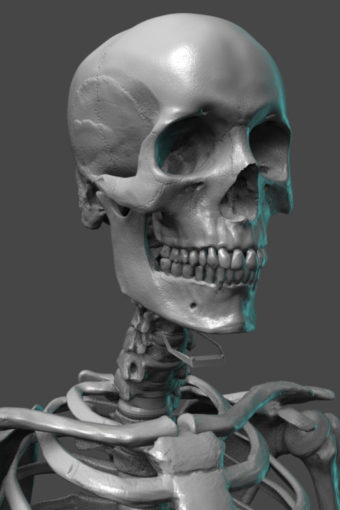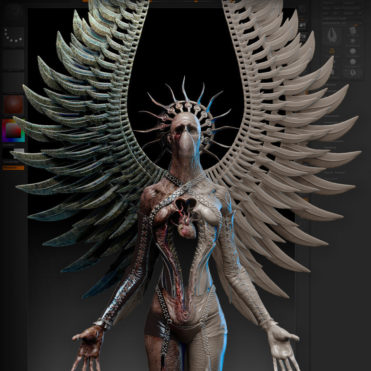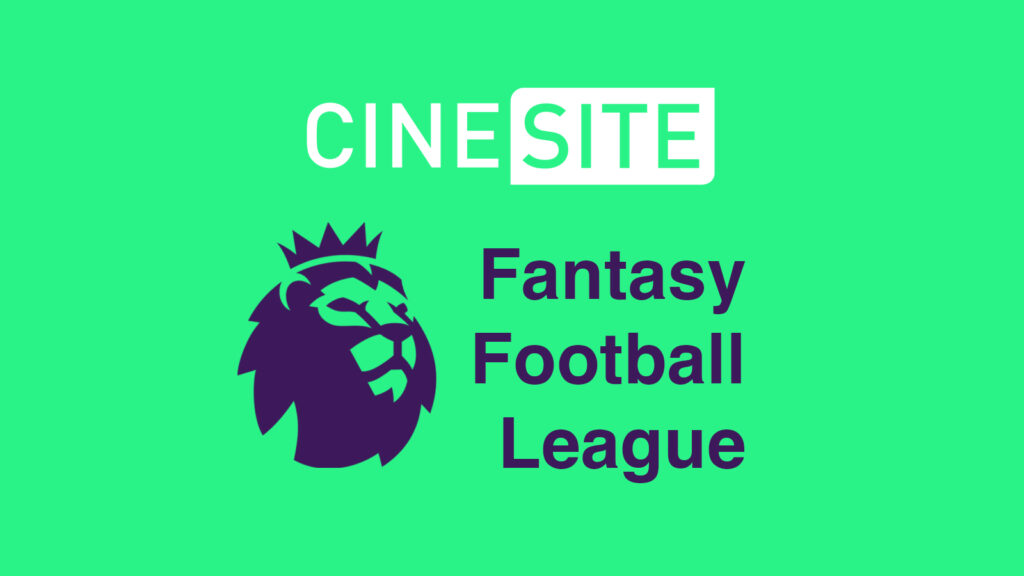
Spotlight: Senior Concept Artist Madeleine Scott-Spencer
The work of a concept artist is an early and pivotal part of the visual effects process. We caught up with Cinesite concept artist, ZBrush Jedi Master and Gnomon School instructor Madeleine Scott Spencer to find out more about her career path and what is involved in creating a shared vision for all to follow.
WHAT IS THE ROLE OF A CONCEPT ARTIST?
The concept artist is there to help interpret the artistic vision of the director, visual effects supervisor or art director. The concept process can guide or elaborate visual ideas for anything from set extensions to creatures and anatomy. By creating concepts and visualising approaches the broad thought process is narrowed and honed down to take everyone closer to the final look of what they want to see on screen.
WERE YOU INTERESTED IN ART FROM A YOUNG AGE?
I spent almost my entire childhood in an improvised art studio in my parents’ basement. I began modelling and sculpting around the age of 8-9 years old, even making an entire human skeleton out of cardboard. In an elementary school art class, when we were supposed to make a bowl, I made a demon creature which my mother still has.
There’s something very satisfying and primal about moulding the world around you into something new or that you’ve imagined. I guess it’s hard-wired into some people and I was exploring that quirk within me from a young age. Initially I used traditional media, and I still love the tactile quality of painting or creating things with my hands. Even now, when creating digitally on a screen I still get that same sense of satisfaction from moulding and making.
AT WHAT POINT DID YOUR INTEREST IN TRADITIONAL SCULPTURE MOVE INTO THE DIGITAL REALM?
I wasn’t really interested in computers when I was a child. I inherited an old Commodore 64 when my brother grew out of it, but making art on a computer didn’t appeal to me. I went to school for animation and did classes in stop motion. Around that time I took my first class in Maya, but I felt that the interface between computer and human was non-intuitive and it really didn’t excite me; ZBrush changed all that. When I started using ZBrush, for the first time I felt like I was controlling something that was behaving like clay.
HOW EARLY WERE YOU USING ZBRUSH?
Back in around 2002, it was relatively new (I was using version 1.5), and the idea of working in that sculptural and direct way was ground-breaking. I presented the ZBrush workflow to a professor at my university and he was sceptical about what was really possible. It was certainly game-changing. I badly wanted to understand it and ended up studying it so intensively that I even wrote early documentation for the makers, Pixologic. Now, I still write books on the use of ZBrush and have released instructional DVDs, which remains a secondary career path. But back when I started out I was completely self-taught, there were no instructions or YouTube videos to learn from.
TELL US ABOUT YOUR CAREER PATH AND HOW YOU GOT INTO VISUAL EFFECTS.
I had been working for a few years as a traditional sculptor and painter in the entertainment industry. Once I graduated from university I began training other artists in the use of ZBrush.
I had always been a fan of Gentle Giant Studios, having seen their ads in Cinefex; I really loved what they did. Their work represented a balance between traditional sculpting and digital creation. They were already a service provider for sculpting and scanning, but they wanted to open a digital art department and move closer to the film and games industries. I flew to LA, had a great interview and ended up working with them as an Art Director for three years, managing a team of artists. We provided look dev, assets, textures and models, the whole package for video games, film and pitch books. I was the first to create a commercial action figure using ZBrush – a Grindylow for Harry Potter and the Goblet of Fire; it’s now the standard medium for creating collectibles.
 After that, I became resident artist at AnatomyTools.com, developing anatomical instruction materials for artists. As part of that I attended cadaver lab studies for about 50 hours.
After that, I became resident artist at AnatomyTools.com, developing anatomical instruction materials for artists. As part of that I attended cadaver lab studies for about 50 hours.
Then I spent seven years at Weta Workshop and Weta Digital, where I created concepts and assets for films including Pete’s Dragon, the BFG and Rise of the Planet of the Apes.
From there I moved to DNeg, where I created creatures for Pacific Rim: Uprising, The Kid Who Would be King and other shows, whilst mentoring some of the more junior artists.
HOW ABSTRACT ARE THE IDEAS YOU ARE PRESENTED WITH?
We had a joke at Weta that with every script you’d move to the creature page and it would say something like, “Then they turned a corner and saw a monster which was like nothing they’d ever seen before!” Having said that, we often had great briefs, creatively they were very broad. I really appreciated having the opportunity to talk with clients and to learn their visual vocabulary directly. By talking with them, you really get a feel for what they might respond to or want to see, so you can present them with a variety of approaches to narrow down. The process allows you to hone in on a visual vocabulary for each show.
Some directors are incredibly precise, providing examples from specific artists or photographers so you can form a very clear picture of what they want.
I really enjoyed working with Guillermo Del Toro on the Hobbit trilogy – he has an incredibly clear visual vocabulary. He could describe exactly what he liked about something or what he was looking for. I worked with him on designing the look of orcs and developing the orc culture.
Ideally, I’m involved as early as possible. Sometimes it can be just me and a director working together and sometimes there is an Art Director on the studio side. Sometimes I’m involved in creating pitchbooks to help producers of projects get backing for their show. Sometimes those projects can take a long time to achieve fruition, so it’s nice to see a release later down the line and know you helped pitch it at such an early stage.
HOW IMPORTANT IS KNOWLEDGE OF ANATOMY TO WHAT YOU DO?
It’s incredibly important. You need those touchstones in physiological reality. I teach 2-3 times a week for Gnomon. People instinctively recognise veracity in the shapes, bodies and faces around them and without that, any creature you create just doesn’t ring true, it will be flat. You need the anatomical realism, design is only one piece of the puzzle.
 I studied classical realist figurative sculpture earlier on in my career, sculpting from life models at the Florence Academy of Art, but that was less focussed on anatomy, it was more about finding an outline, a silhouette and working from the outside in, refining profiles into shapes. That posed the question, “Was I sculpting anatomy or progressing a character for art?” There is a complete contrast between the two approaches which was very interesting to me, but for the kind of creatures and characters I create, the anatomical approach is absolutely the best one.
I studied classical realist figurative sculpture earlier on in my career, sculpting from life models at the Florence Academy of Art, but that was less focussed on anatomy, it was more about finding an outline, a silhouette and working from the outside in, refining profiles into shapes. That posed the question, “Was I sculpting anatomy or progressing a character for art?” There is a complete contrast between the two approaches which was very interesting to me, but for the kind of creatures and characters I create, the anatomical approach is absolutely the best one.
WHY DO YOU TEACH?
My mum is a teacher, so it’s in my nature; I love sharing knowledge and information. There are two levels of knowing something – if you understand it and can also explain it to someone else, that’s another level of understanding. I learn more myself when I’m teaching someone else. I’ve been teaching for 16 years now and some students from my early classes have achieved great things. I love seeing them as Art Directors and progressing in their own careers, that’s the most rewarding thing for me. That, and people telling me they really benefited from my classes or it helped them get where they want to be.
WHICH DO YOU PREFER – TRADITIONAL OR DIGITAL SCULPTURE?
I still do traditional sculpting and painting. I like painting in oil and acrylic, I’m working with gouache at the moment. I’m also currently sculpting with polymer clay, which is cleaner than anything else, but I like all sculptural mediums. Although it’s more efficient to use digital methods, I still have a romantic notion of the smell, touch and feel of working with physical material.
WHERE DO YOU GET YOUR INSPIRATION?
 I like the symbolist painters of the 19th and early 20th century, like Aubrey Beardsley and Carlos Schwabe, as well as contemporary horror artists and illustrators like Bernie Wrightson. I’m inspired by comic book art of the 50s and 70s, I love Tales From the Crypt and creepy magazines too, so I guess my tastes and influences cover all bases, from high-brow to low-brow!
I like the symbolist painters of the 19th and early 20th century, like Aubrey Beardsley and Carlos Schwabe, as well as contemporary horror artists and illustrators like Bernie Wrightson. I’m inspired by comic book art of the 50s and 70s, I love Tales From the Crypt and creepy magazines too, so I guess my tastes and influences cover all bases, from high-brow to low-brow!
WHAT WOULD YOU SAY IS YOUR GREATEST STRENGTH AS A CONCEPT ARTIST?
My ability to communicate and to listen. As a skill, that can often be overlooked., but it’s a huge part of what I do. Ultimately, in interpreting an artistic brief from an individual or a group you have to listen and soak everything up. It’s all about listening and visual communication.
WHAT MAKES YOU PASSIONATE IN YOUR WORK?
Every time I do something, I want it to be better than the last thing I did. That’s common to a lot of artists but perhaps some wouldn’t be so honest about it. There’s that constant drive to reach that moment where you’ve achieved something great and that’s what keeps it fresh.
Plus, I’ve never lost that childish enthusiasm I’ve always had for making something engaging, beautiful or creepy. I value and nurture that enthusiasm; if my job ever became perfunctory I know that would be the time to stop.

